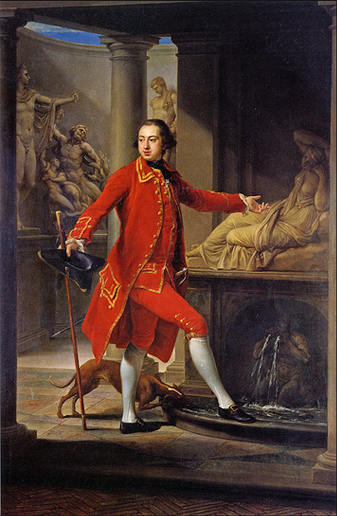The gentlemen of the Grand Tour weren't just passionate about the art of the ancient world, they had themselves painted into the scenery. By Andrew Graham-Dixon
As painted by Pompeo Batoni, circa 1764, Thomas Dundas, later First Baron Dundas is the very model of the Georgian gentleman abroad. Resplendent in his suit of red velvet trimmed with gold lace, this charmingly complacent young man is enjoying the company of statues. He stands before a swooning stone goddess (the Vatican Ariadne, to be precise) in whose direction he gesticulates as if to insist that none save one as fair as she shall ever capture his heart. In the background, a marble Laocoon writhes in sympathetic agony while the Apollo Belvedere remains indifferent.
The 18th-century passion for antique art, to which Batoni's portraiture remains such an eloquent memorial, was tinged by superb presumption. The travelling aristocrats of the Georgian period, Grand Tourists as they soon became known, styled themselves the moral and spiritual successors to Athenian Greece and Republican Rome. Batoni became their favourite painter of souvenir portraiture because he made his sitters look as classically perfect as the works of Greco-Roman art with which they felt such an affinity. In the case of young Dundas, the artist cleverly arranged the sitter's limbs so that he himself resembles a modern, clothed version of the Apollo Belvedere behind him. Such effortless elegance, this visual rhyme declares, such nearly divine grace!
Batoni's talent for the flattery of fops is, as might be expected, amply demonstrated in "Grand Tour: the Lure of Italy in the Eighteenth Century" at the Tate Gallery. This turns out to be a capacious and extremely diverting rag-bag of an exhibition. Less art historical than anthropological in intent, it is a study of the customs, morals and interests of...


